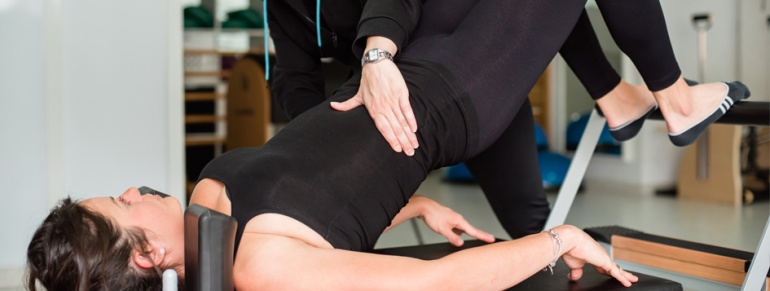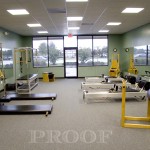- September 20th, 2018
- /
- Pilates
- /
- The Posterior Chain and Pilates

To fully appreciate how one effects the other – we must start by defining what the posterior chain is, and it’s a group of muscles on the posterior of the body including the biceps femoris, gluteus maximus, erector spinae muscle group, trapezius, and posterior deltoids.
Now, let’s look at the relationship between the posterior chain and Pilates.
A Stable Pelvis – Pilates emphasizes the importance of stabilizing your torso through pelvic stability. This core stability is the ability to keep your pelvis and spine in a desired position while moving your arms and legs, or your entire body without distorting or making incorrect movements. You cannot maintain control of your posterior chain during movement if you are prone to arch your lower back or move your pelvis excessively. If you arch your back or move your pelvis, this is an indication of a weak core or poor core stability or poor core control. Any of these can lead to dysfunctional movement or worse, potential injuries.
Engaging Your Posterior Chain – one of the main goals of Pilates is to help you to engage your posterior chain. If you are not familiar with the term posterior chain, it refers to the muscles which include your lower back, your glutes, your hamstrings, and your calf muscles. Exercises involving the Posterior Chain utilize these muscles in a chainlike manner. If you are an athlete or participate in sporting activities such as softball, golf or even lifting weights, where you are swinging, throwing, and lifting then you understand that having power is not enough. Your muscles need to be strong enough to transfer that power along your chain.
Strong Chain = Strong Core – exercises which focus on the posterior chain also benefit and help create a strong core. Many people confuse the notion that one’s core applies to your abdominal muscles. Knowing that your lower back, glutes, and your hamstrings are each a part your core too, and these muscles on the back side of your core, need to be developed and maintained as well.
Start from Your Core – a second important facet of Pilates is to make sure all of your movements begin from your core. Most Pilates exercises require maintaining a spine all while moving either your arms and/or legs. The weight of your arms and legs, and their movement present a challenge to your stable trunk position. Starting from your core is a vital Pilates element, and one that prevents injuries and promotes functional movement.
Pilates’ Ranges of Motion – Joseph Pilates’ basic principles for Classical method are: breathing, whole body movement and whole-body commitment. Together that means a full, healthy and complete range of motion at all joints during exercises. If you are ever taught that a Pilates exercise is meant for one isolated joint or muscle, then you are being taught incorrectly.
To learn more about your Posterior Chain and the relationship with Classical Pilates exercise, sign up for a class with any one of Performance Pilates’ expertly trained instructors!




